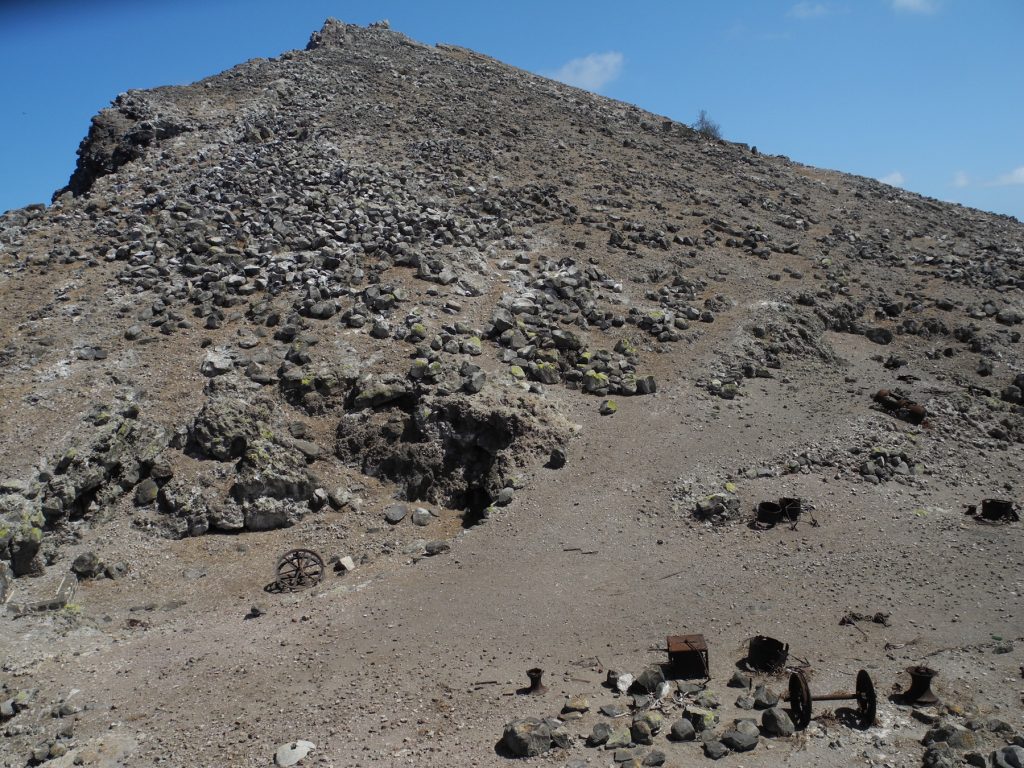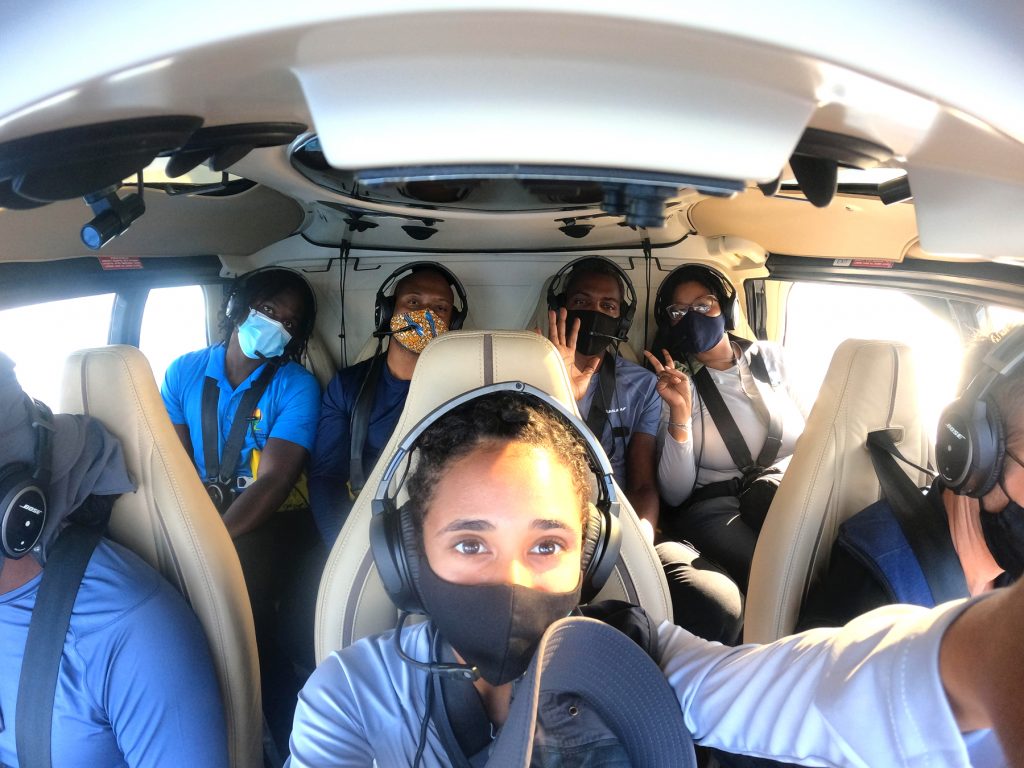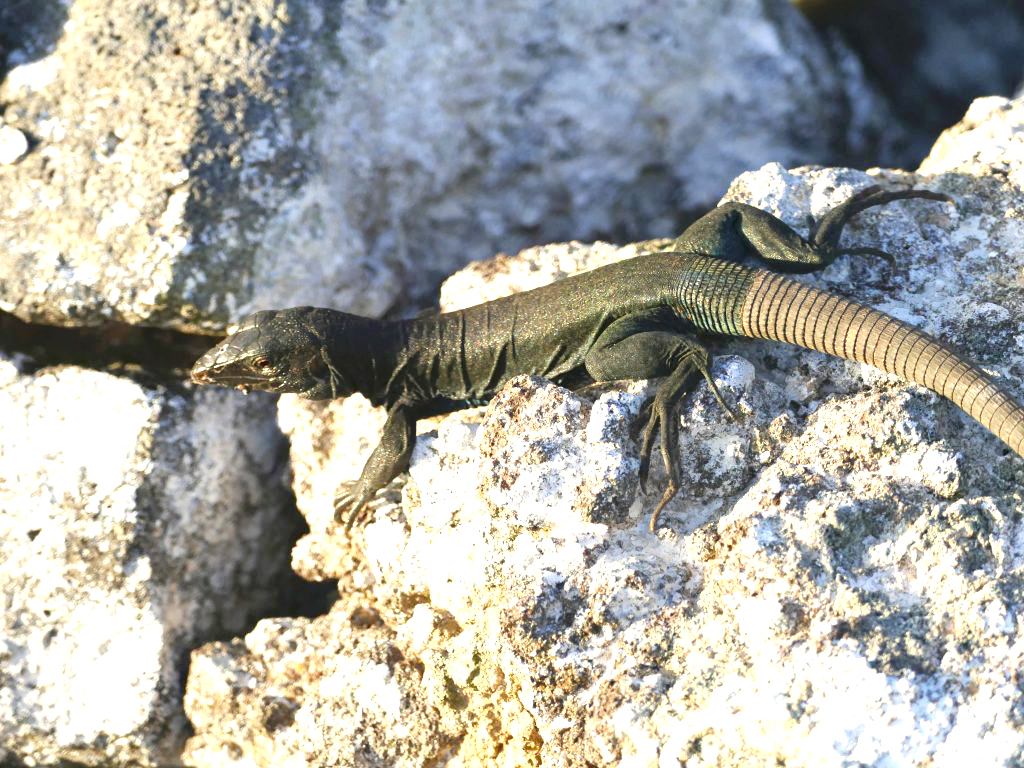
by Gemma Handy
Something magical is afoot on the nation’s lesser known third island of Redonda. Once a desolate expanse of rock, this tiny mile-long islet is today a burgeoning eco haven, teeming with fresh new life and vegetation several feet high.
Redonda may lack the glorious scenery and white sand beaches that put its sisters on the map, but this volcanic hulk is said to be one of the most ecologically valuable landscapes in the region.
And now its status as prized habitat for seabirds and critically endangered reptiles is set to be cemented into law. The Environmental Awareness Group (EAG) has received approval from Cabinet to begin the process of designating Redonda and its surrounding seas as a protected area.


Masked booby peeks out of vegetation (Photo by Shanna Challenger) 
Redonda as seen in 2012 while rats and goats were present (Photo by Jenny Daltry and Cole White) 
Redonda in 2020 (Photo by Jenny Daltry and Cole White) 
The EAG team on the helicopter en route to Redonda (Photo by Britney Hay) 
Ground lizard (Photo by Mike Appleton)
The move follows four years of painstaking work relocating feral goats which had eaten most of Redonda’s trees and plants to Antigua, along with eradicating 6,000 invasive black rats which devoured endemic lizards along with the eggs of threatened birds.
The EAG’s Shanna Challenger said the group had made presentations to Cabinet and environment officials to explain why Redonda is so special, both scientifically and culturally.
“The restoration was begun because it was voted by a regional body as the top island in the Caribbean for conservation. They said out of all the other countries, Redonda was the one that had the most species to lose – and the most dire situation happening,” Challenger told Observer.
“It is globally recognised as an important bird area and a key biodiversity area. There are species there found nowhere else in the entire world; if anything was to happen to Redonda we would lose all of that incredible natural wealth.”
In addition to its environmental offerings, Redonda has an intriguing history as the scene of a thriving 19th century guano-mining industry.
“In Antigua, we have artefacts from the Amerindian era and from the shipping era, but we don’t have anything from that industrial mining era,” Challenger explained.
“Redonda has a lot of historical significance as well, and so after telling them how important it is, we are now working with the Department of the Environment to get it protected under the Environmental Protection and Management Act 2019.”
Chief Environment Officer Diann Black-Layne told Observer her department was keen to work with the EAG – and hoped to get official protection for more of the nation’s special sites too.
Challenger recently spoke of the tear-jerking moment EAG members visited the island for the first time in 18 months. The helicopter they previously used to get there was no longer in service and there was a long wait for replacement transport.
She said it was a “very emotional moment” to finally set foot on Redonda earlier this month.
“It was such a stark contrast to what I saw the first time I went over there in 2016 when the island was literally crumbling into the sea,” she said.
The resurgence of trees and plants has spawned new populations of wildlife. Numbers of the island’s endemic tree lizard have tripled, while the ground lizard population has soared six-fold.
“It was a very exciting, humbling and amazing moment to see the impacts of our conservation work so obviously and visually displayed,” Challenger said.
“Right now is the beginning of the brown booby nesting season; we saw many boobies with two eggs and a chick. We saw red-footed boobies, red-billed tropicbirds and even a peregrine falcon. And don’t get me started on the lizards,” she enthused.
Redonda was officially declared rat and goat-free in July 2018. Keeping it that way is a feat all of its own.
The EAG hopes to close the island to visitors for a year while its rejuvenation is still in its infancy.
Once protected, anyone wishing to go there will have to seek permission from the EAG, which will be tasked with its oversight, and adhere to strict bio-security protocols.
“We want people to realise how special and important Redonda is and all the things they have to do to make sure they are not compromising it,” Challenger said.
“If you happen to have one female pregnant rat on your boat stowed away and she gets on to Redonda, that’s it for us and it will undo the hundreds of thousands of US dollars, plus blood, sweat and hard work that we have put into getting Redonda to the status that it is.”
She added, “Redonda has been the perfect experiment to literally see an island reborn.”
